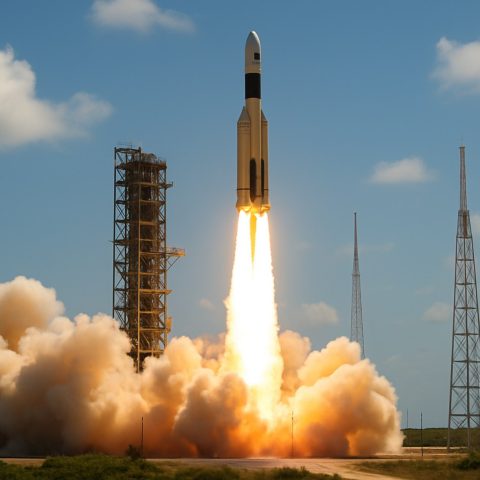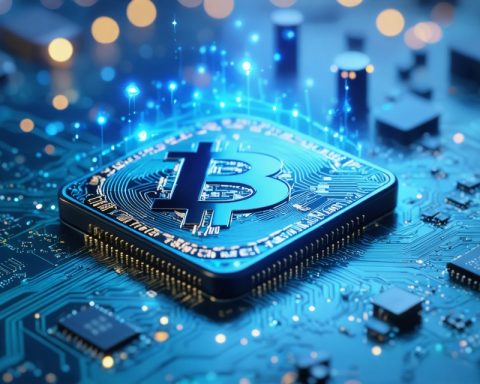Unpacking IOTA: The Future of Digital Currency
IOTA stands out in the crowded field of cryptocurrencies due to its unique technology called Tangle, which distinctly departs from traditional blockchain systems. This innovative approach aims to integrate digital currencies into the rapidly growing Internet of Things (IoT). IOTA eliminates the need for mining, allowing transactions to occur faster and with less energy consumption.
As of 10:30 AM UTC, IOTA’s value was $0.32847, reflecting a recent 4.72% daily increase, though it also experienced a minor dip of 0.35% over the past hour. With a notable market capitalization, IOTA is a significant player among cryptocurrencies.
Developed by a German foundation, IOTA’s Tangle utilizes Directed Acyclic Graph (DAG) technology, which allows users to carry out transactions simply with a smartphone or computer, and these transactions incur no fees for users. Instead, users must confirm transactions before completing their own, creating a collaborative ecosystem.
However, IOTA isn’t without its challenges. While it promises resilience against quantum computing and rapid transaction speeds, it faced security issues in 2017 when a hacking incident severely impacted its market value. As digital currencies evolve, their unpredictable nature highlights the importance of cautious investment. The ascent of cryptocurrencies continues as they gain acceptance among governments and corporations globally, reshaping the financial landscape.
Implications of IOTA on Society and the Global Economy
The emergence of IOTA represents a significant shift not only in digital currency but also in how we envision the intersection of technology and socioeconomic structures. As IOTA bridges the gap between the Internet of Things (IoT) and financial transactions, it reframes the narrative around digital currencies, especially in relation to smart cities and automated systems. This could lead to a future where devices autonomously manage transactions, further embedding cryptocurrencies into daily life.
The broader societal implications are profound. As everyday objects—everything from refrigerators to vehicles—become capable of financial interactions via IOTA’s efficient, fee-less transactions, we may witness a transformation in consumer behavior. This integration could democratize access to finance, especially in underbanked regions where traditional banking infrastructure lacks presence.
From an environmental perspective, IOTA’s energy-efficient model provides a stark contrast to the energy-intensive proof-of-work systems of many cryptocurrencies today. Embracing such technologies could mitigate environmental impacts associated with cryptocurrency mining, contextually essential as climate change remains a pressing global challenge.
Looking ahead, future trends in decentralized finance could further empower users, shaping a landscape where smart contracts and automated financial transactions redefine commercial interactions. If successful, IOTA could lay the groundwork for a new global economy, signaling a critical departure from traditional monetary frameworks and encouraging a more interconnected world.
Is IOTA the Game-Changer in Cryptocurrency for the IoT Era?
Unpacking IOTA: The Future of Digital Currency
IOTA is making waves in the cryptocurrency domain, primarily due to its groundbreaking Tangle technology. Unlike traditional blockchain, which relies on a linear structure, Tangle uses a Directed Acyclic Graph (DAG) to facilitate transactions. This unique architecture enables IOTA to effectively integrate with the expanding Internet of Things (IoT), positioning itself as a crucial player in the future of digital currency.
How IOTA Tangle Works
The Tangle system allows transactions to be processed without the need for mining, resulting in significantly lower energy consumption and faster processing times. Users must confirm two previous transactions before they can perform their own, thus creating a self-sustaining network that eliminates transaction fees. This collaborative model is a significant departure from conventional cryptocurrencies and promises to enhance the scalability of microtransactions, particularly beneficial for IoT devices.
Key Features and Innovations
– No Transaction Fees: Users of IOTA do not incur any fees when making transactions, making it ideal for micropayments.
– Scalability: The Tangle technology allows for limitless scalability, as the network becomes faster and more efficient as more transactions occur.
– Quantum-Resilience: IOTA has been designed with future-proofing in mind, theoretically offering resilience against quantum computing threats.
Pros and Cons of IOTA
Pros:
– Environmentally Friendly: Since it doesn’t require mining, IOTA has a lower carbon footprint compared to many other cryptocurrencies.
– Fast Transaction Speeds: Users experience rapid transaction confirmations.
– Ideal for IoT: IOTA is well-suited for integrating with devices that can leverage microtransactions.
Cons:
– Security Concerns: The platform faced significant security challenges in 2017, raising concerns about its robustness.
– Complexity for New Users: The unique structure of Tangle may be difficult for newcomers to understand compared to traditional blockchain systems.
Use Cases for IOTA
IOTA is particularly well-suited for industries where microtransactions are prevalent, such as:
– Smart City Solutions: Streamlining automation processes and logistics in urban environments.
– Automotive Sector: Facilitating payments for vehicular data sharing or ride-sharing services.
– Healthcare: Managing healthcare data and enabling peer-to-peer transactions without intermediaries.
Limitations and Market Challenges
While IOTA presents innovative solutions, it faces limitations such as its need for broader adoption and potential regulatory hurdles. Moreover, the cryptocurrency market remains volatile, and investments are subject to significant risks.
Pricing Trends
As of the latest data, IOTA’s price was $0.32847 with a daily increase of 4.72%. However, investors should analyze the market’s historical performance and volatility before committing to any investments.
Future Predictions
As more devices connect to the IoT, the demand for solutions like IOTA may grow. Analysts predict that if IOTA can successfully overcome its past security hurdles and educate potential users about its technology, it may play a major role in future digital transactions.
Insights and Market Analysis
Market acceptance of cryptocurrencies continues to grow, with IOTA positioned to capitalize on this trend, particularly in the IoT sector. Its fee-less transactions and fast execution speed are enticing features that align well with the needs of connected devices.
For more information about the advancements and trends in cryptocurrency, visit IOTA’s official site.
In conclusion, IOTA’s distinctive technological foundation places it at the forefront of the cryptocurrency landscape, especially with the growing emphasis on the Internet of Things. However, potential investors should approach with caution due to the inherent risks associated with digital currencies.







